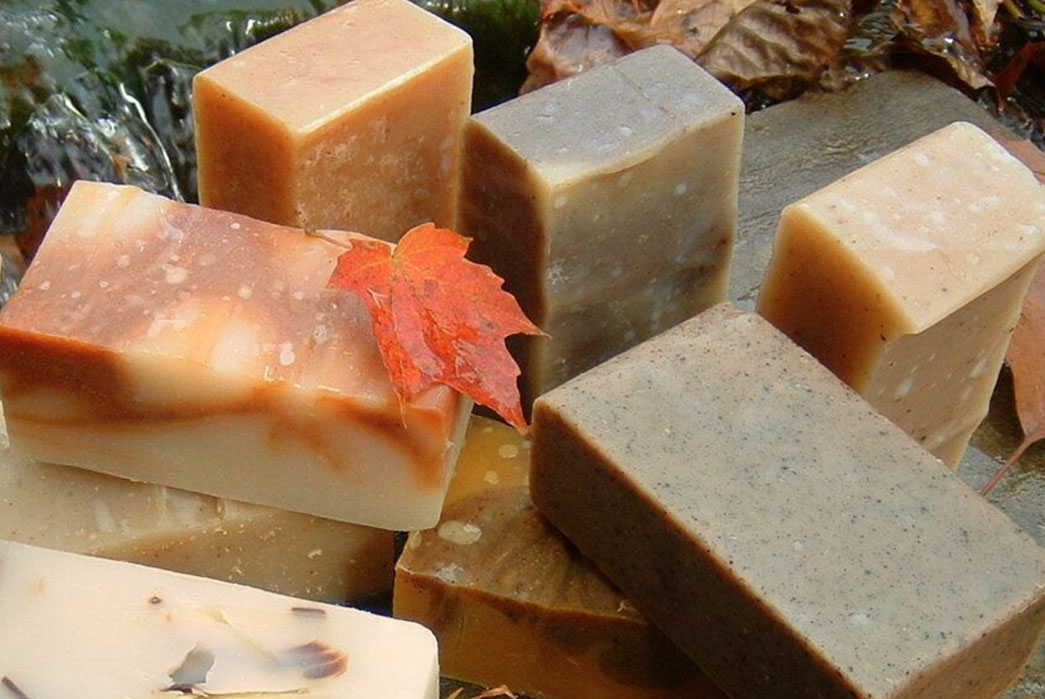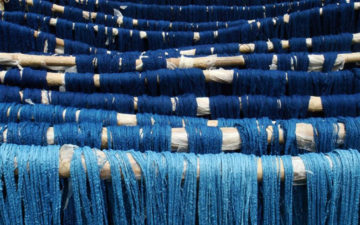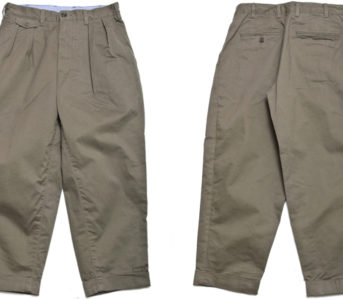Now, more than ever, soap is on the brain—and hopefully on your hands. But soap, or the cleaning agents we generically refer to as “soap,” are far more complex than one might initially suspect. Soap’s proliferation wasn’t an especially easy one, mainly because it took significant advances in scientific understanding to perfect the product and to understand that people needed to clean not only their prized possessions, but themselves as well.
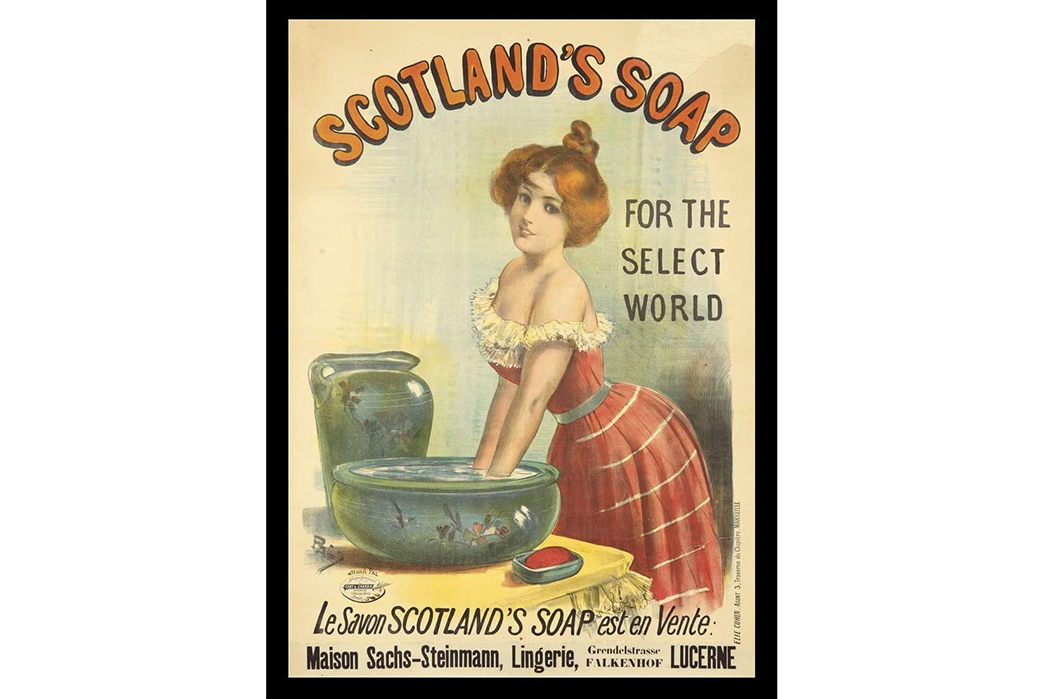
Scotland Soap. Image via Pinterest.
Join us for a brief respite from the chaos in the news—and take a deep dive into something we take for granted, but desperately need: soap.
In The Beginning
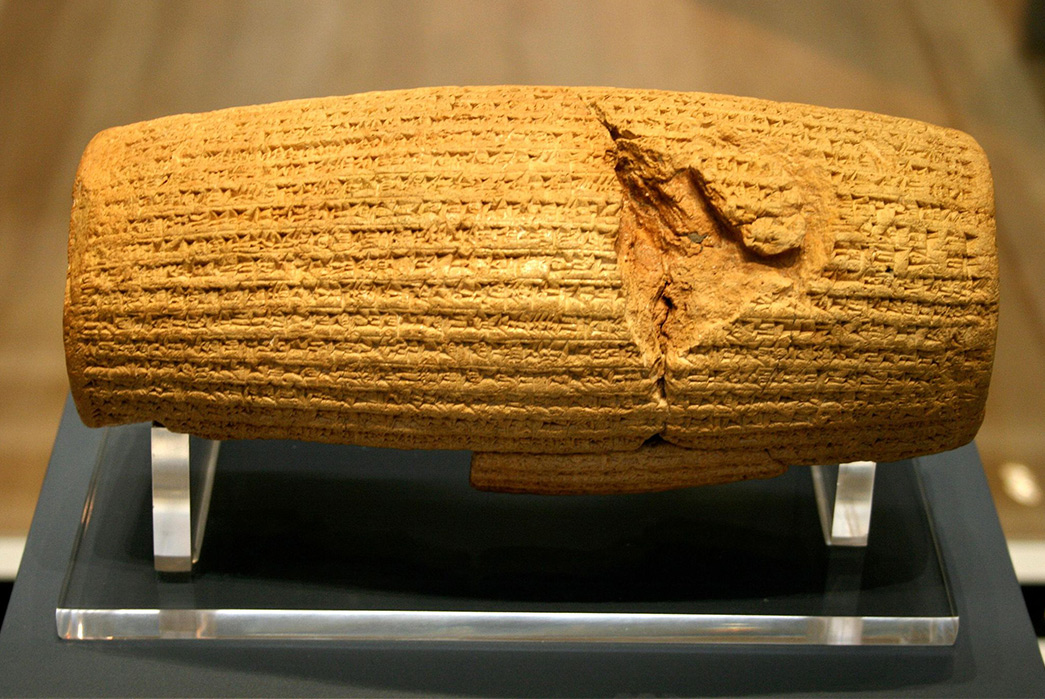
The Cyrus Cylinder. Image via Arzia Rodegar.
Like many inventions, soap has a mythic Eurocentric origin story, that is really just that—myth. In reality, soap’s birthplace is the same as modern civilization, Ancient Babylon and Mesopotamia. Some of those very earliest mentions of soap are on cylinders like that above, which date back to 2800 BCE. Perhaps calling it soap is a stretch, but it’s the first mention of anything at all resembling soap—combining animal fats with ash.
All early soaps used some variation of this formula, although for the most part soap was only used for cleaning textiles, cooking supplies, etc. and only rarely prescribed as a treatment for some serious skin conditions.
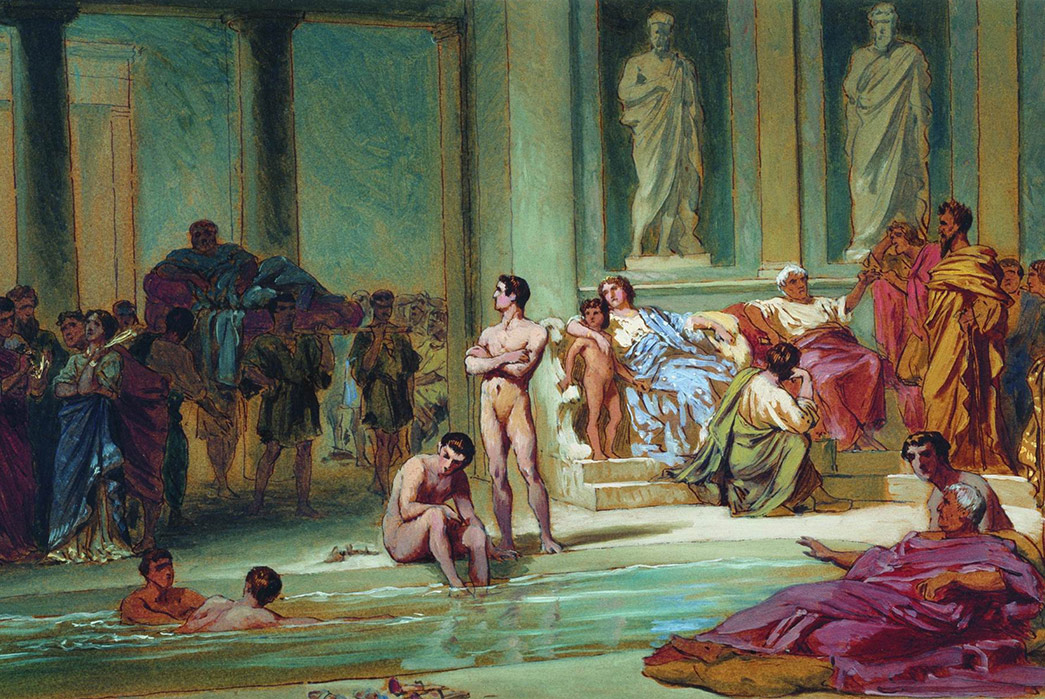
In the Roman Baths, 1865. Image via Wikiart.
There’s a reason that the origin myth for soap comes from the Romans. Those guys took bathing very seriously. The Romans described a place called Mount Sapo, whereon they would burn animal sacrifices. When the rains came, it would wash the fat and ash down to the nearby river, where people doing their washing realized something was a little off about the water, but it certainly made cleaning easier.
This story was a myth, of course, but it helps to explain an otherwise miraculous discovery that aided people for years to come.
Early soap was made from lye and animal fats. Lye could only be made when ash met with water and intense heat and when lye is combined with fats or oils, you get soap. Most of the major ancient civilizations used some form of this combination to do their cleaning, but even the Romans, who valued cleanliness, didn’t use it for their personal hygiene.
Even in the famous baths, when they bathed, they covered themselves in perfumed oils and had it scraped off their bodies by their slaves with a knife called a stigil. Regardless, the cleanliness that the Romans so prized vanished with the fall of the empire and Europe plunged into the Dark Ages.
Soap Advances

Nicolas Leblanc. Image via Wikimedia.
With Europe strictly controlled by the Catholic Church in the centuries immediately following the fall of the Roman Empire, hygiene declined greatly. “Excessive bathing” was discouraged and as a result, people were far more susceptible to plague and illness, most famously “The Black Death.”
In the meantime, everyone outside of Europe was staying pretty clean and consequently plague-free. But eventually soap resurfaced in Europe and as time wore on, the technology only improved.
Soapmaking started coming back into practice in the seventeenth century CE and spread slowly from Spain and Italy and eventually moved to France, where, beginning in the 1700s, monumental new advances were made.
Until scientists took up the cause of cleanliness, making soap was another in a long list of household chores—and although certain artisans made small batches of special soaps, if you wanted to stay clean, you needed to undertake the lengthy process of making your own.

Soap Factory, 18th century. Image via Science Photo Lab.
This all changed when Nicolas Leblanc, a French scientist, invented a process by which alkali (a placeholder for the more labor-intensive lye) could be made from simple salt. Soda ash and potash (aka alkali) are integral chemicals in the production of glass, paper, but most importantly for this article, soap.
Potash had to be obtained from wood ash, but by the 1400s, Europe had experienced such intense deforestation that the ash had to be imported from North America. Leblanc’s discovery in 1790 vastly changed the way that alkali could be produced and in so doing, greatly expedited the soap-making process.
And with the Industrial Revolution hot on the heels of this important new step, soap, could for the first time, be manufactured en masse.
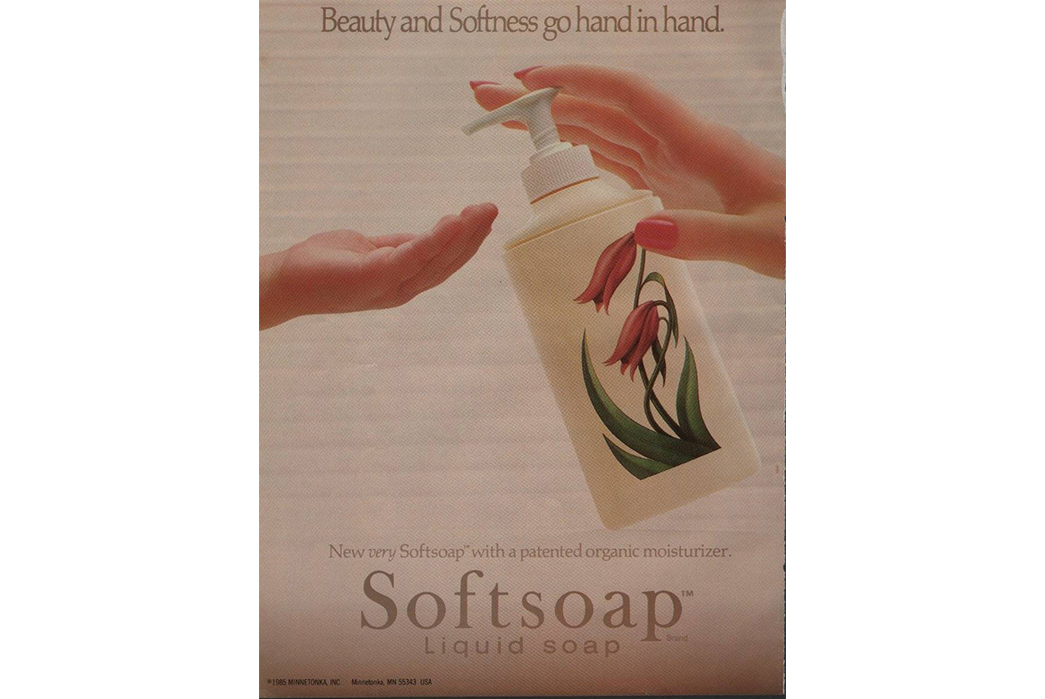
Softsoap ad, 1985. Image via Ebay.
No great strides were made in soap invention until the 1980s, with the proliferation of liquid soap. Liquid soap had been in production for over a hundred years at this point, but until the mid-1900s it was pretty harsh, not typically used in personal hygiene.
When companies like Minnetonka, Colgate, and Proctor and Gamble finally developed sellable, gentle, liquid hand soaps, they faced a problem—how to serve it up? Minnetonka, the owner of Softsoap, took drastic measures by buying up all plastic soap dispensers available at the time, both setting the standard for most modern hand soaps and establishing a monopoly.
Soap vs. Detergent
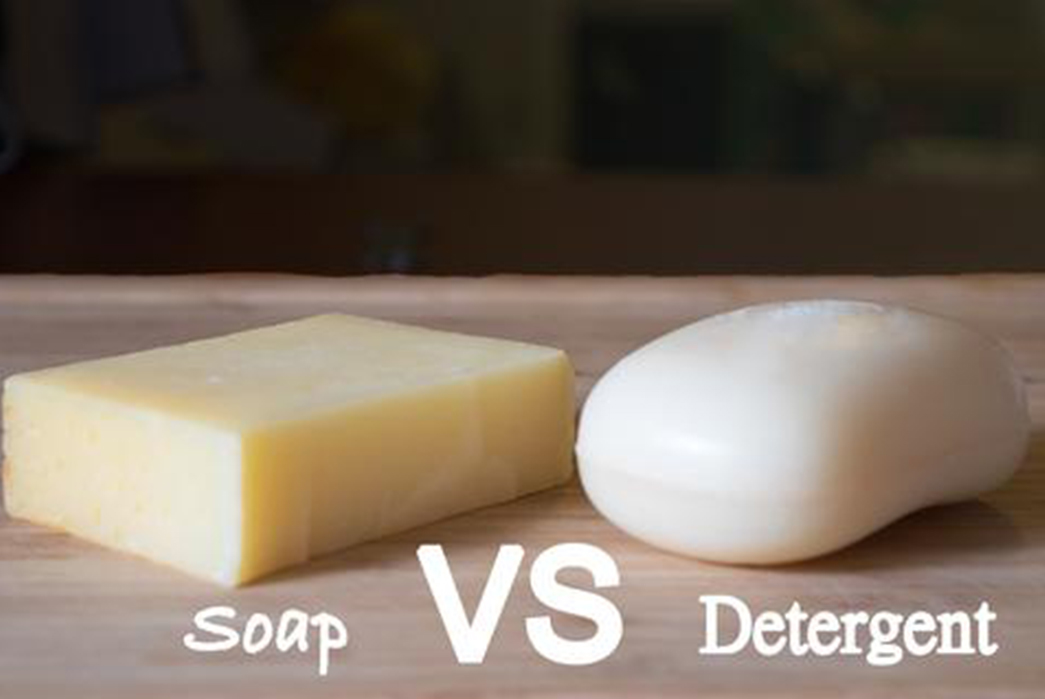
Much of what we consider to be soap is actually detergent, with a variety of added chemicals to increase lather, lower irritation, and to better moisturize. Soap, on the other hand, is so simple, that not much has changed about its production since the early 1800s.
A true soap is really just the alkali and some kind of fat or oil, which when combined under heat, begin a process called saponification at which point they thicken and are often treated with additional perfumes. Then the hot pudding-y substance is left to cool in molds and is made into bars.
The saponification process naturally eliminates the alkali, which would otherwise sting your skin and cause general discomfort. You’re left with about 75% soap and 25% glycerine, which is sometimes left to act as a natural moisturizer, or removed and sold separately.
Experiments with detergent first started around WWI, when a shortage of animal fat resulted in a soap shortage. There were other reasons as well. Soap, in its untampered-with form, produces an insoluble soap scum when the soap reacts with ions in water.
Modern soaps often have additives to prevent or diminish the formation of soap scum, but detergents, which are usually made from propene, which in turn is derived from crude oil, don’t react with water in the same way. Even though there are some additives in modern soaps, they are largely derived from organic materials and break down easily and degrade.
Because detergents, like most plastics, are made with petrochemicals, they take far longer to break down and get washed into larger bodies of water—negatively affecting the environment.
Beginning in the 1950s, detergents have outsold soap in the U.S., which is shocking. Until researching this article, I’d always imagined that detergent was something we only used on our clothes and dishes—unbeknownst to me, I’ve probably been using it on my hands and body for years.
As discussed in our article on fibers, there can be health risks associated with needlessly exposing ourselves to petrochemicals and of course, serious consequences for the world around us.
Good Old-Fashioned Soap
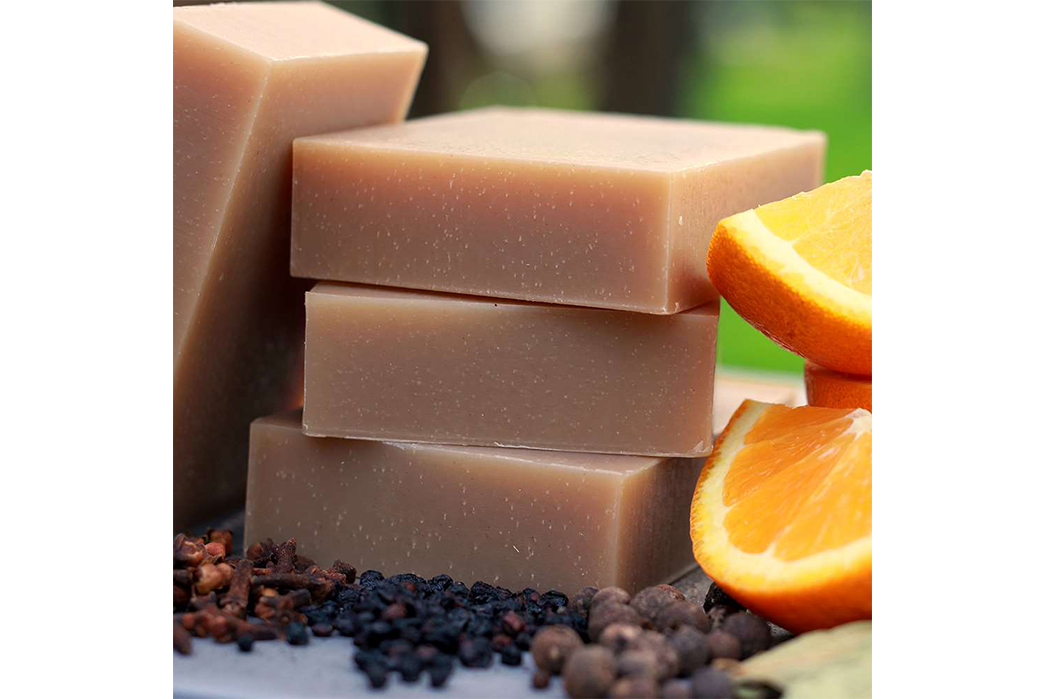
Bay Rum Men’s Soap. Image via Chagrin Valley.
There’s no reason to needlessly expose ourselves to synthetic materials and chemicals, so it may be in our best interest to look into soaps that clean our bodies and don’t mess us up in the process. Luckily, there are still plenty of soap makers out there still doing things the old-fashioned way. (Disclaimer: Until this Coronavirus crisis is over, please wash your hands with whatever soap/detergents you have available, we can be picky when everyone is healthy again.)
Chagrin Valley
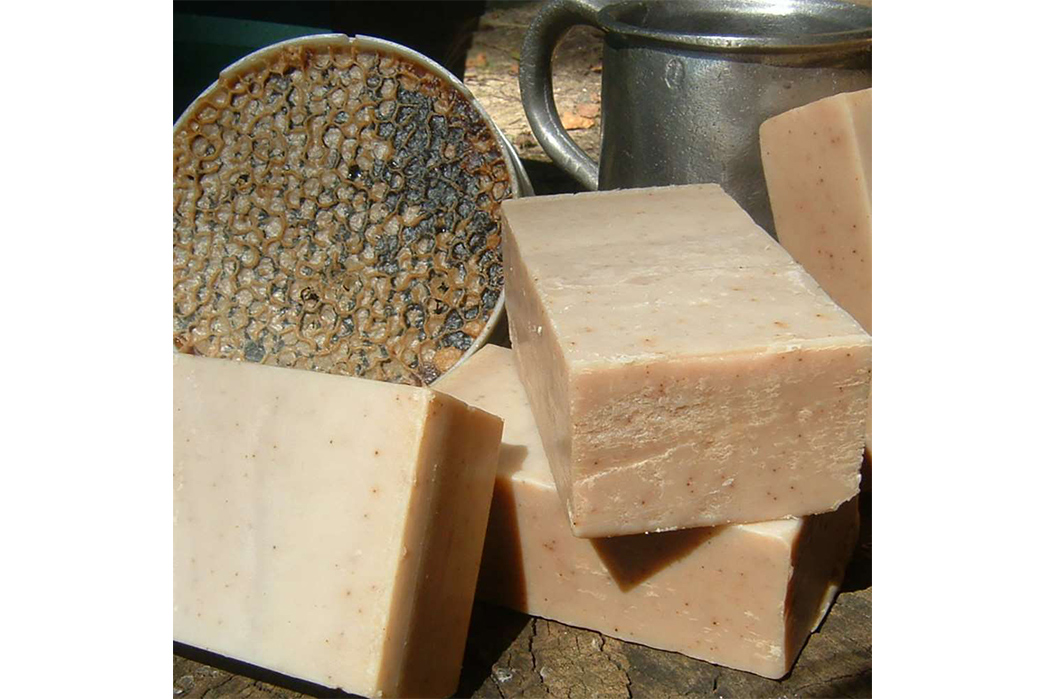
Honey Beer Soap. Chagrin Valley.
Chagrin Valley Soap and Salve Co. makes a wide range of soaps with all-natural ingredients and all their products are certified GMO and cruelty-free. They make all manner of products, including shaving soaps, shampoos, and of course, soaps!
Available at Chagrin Valley Soap and Salve Co.
Mrs. Meyers
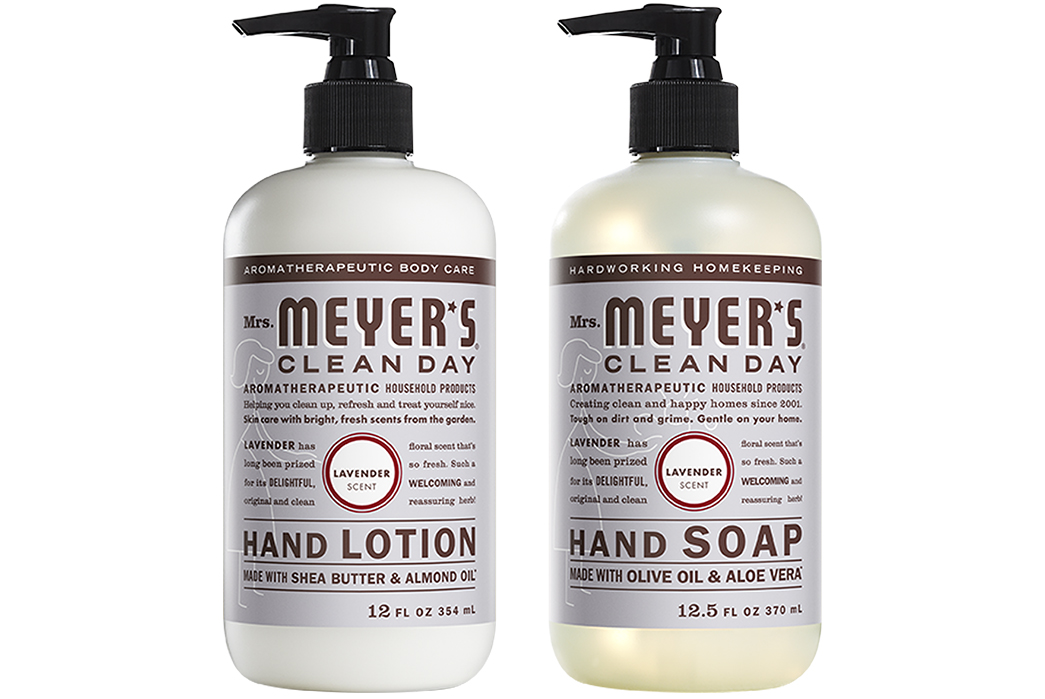
Mrs Meyers hand soap. Image via Mrs Meyers.
While not quite as traditional as the aforementioned artisanal bar soaps, Mrs Meyers‘ hand soap is pretty readily available and they are fairly transparent about the substances they use in their products.
Not quite in the same league as Chagrin Valley, Mrs Meyers is a lot more accessible than most natural soaps. They do use some synthetics, mainly for scent, but most surveys have ranked their products as being 98% natural.
Available at Mrs. Meyers.
Dr. Bronner’s
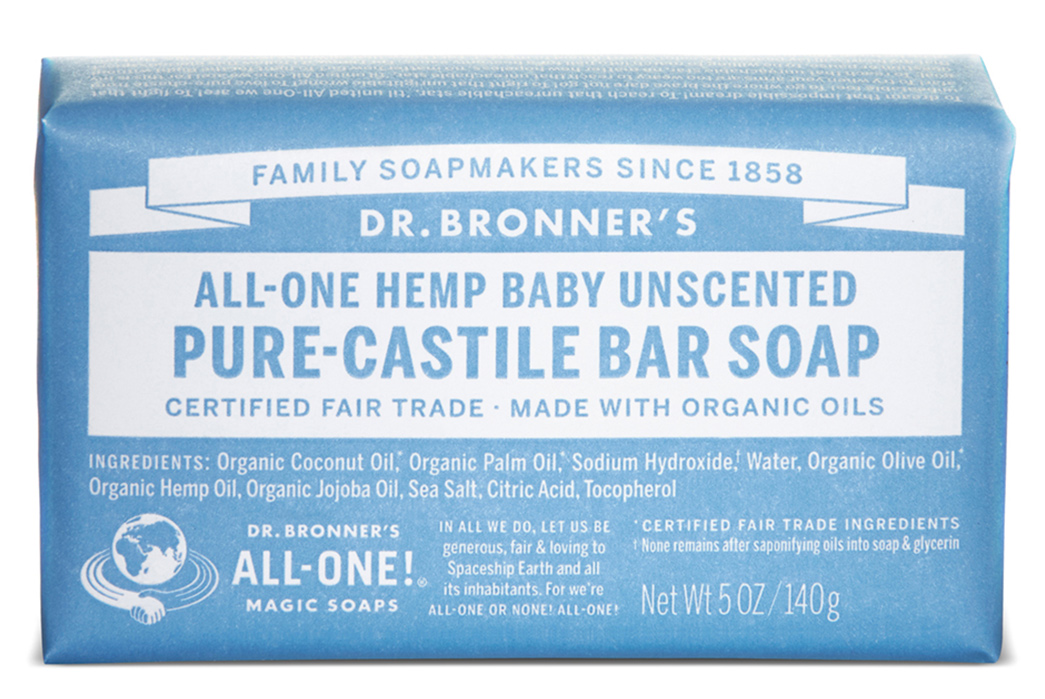
Dr. Bronners Bar Soap. Image via Amazon.
Dr. Bronner’s is another famous brand that’s easy to find. The above bar is Castile soap, an olive-oil based soap that is one of the purest and oldest forms of soap.
There’s no funny business here, all the ingredients are listed right on the packaging (which happens to all be recycled material) and this would do an excellent job of cleaning without exposing you to any unnecessary chemicals.
Available on Amazon.

